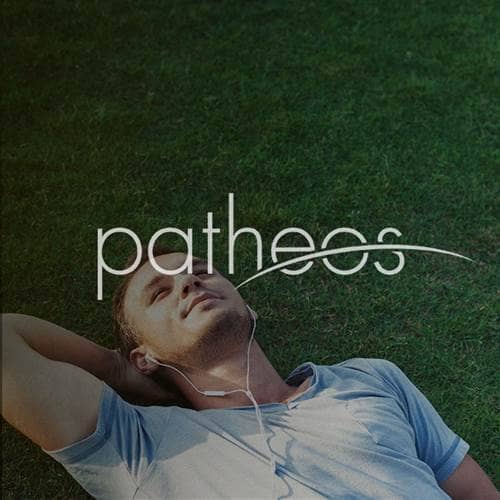- Trending:
- Pope Leo Xiv
- |
- Israel
- |
- Trump
- |
- Social Justice
- |
- Peace
- |
- Love

RELIGION LIBRARY
Scientology
Sacred Texts
Scientology does not have a sacred text comparable to the Bible or the Quran. It is built on the many writings of its founder, L. Ron Hubbard, beginning with the first book describing his discoveries about the human mind -- Dianetics: the Original Thesis -- written in 1945 but first published in 1948. The publication of Dianetics: The Modern Science of Mental Health three years later led to the founding of the first organizations.
Through the 1950s, Hubbard continued to write books that expounded upon his ideas, and these became basic texts for church members and were widely circulated to prospective members. These included Dianetics: The Evolution of a Science (1950); Science of Survival (1951); Self Analysis (1951); History of Man (1952); Scientology: 88 (1952); Scientology 8:80 (1952); Scientology: 8-8008 (1952); How to Live Though an Executive (1953); Scientology 55 (1954); The Creation of Human Ability (1955); Scientology the Fundamentals of Thought (1956); The Problems of Work (1956); and All About Radiation (1957). In the 1960s he added Have You Lived Before This Life? (1960); Scientology a New Slant on Life (1965); Introduction to Scientology Ethics (1968); and The Phoenix Lectures (1968).
In addition to the many titles aimed at the general public, Hubbard also authored a number of technical and professional works that covered the work of auditors and class instructors, and organizational procedures. The numerous publications aimed at those who delivered Scientology to members and others who took Scientology classes were designed initially to inform instructors on procedures, but over the years began to additionally emphasize the need to remain faithful to the exact format that Hubbard taught and condemn any deviation from the procedures he had dictated.
Hubbard believed that he had discovered a clear and scientific way to spiritual reality and truth. The procedures he developed constitute a precise technology to apply his scientific discoveries. To deviate was to misuse the technology. It became the role of the church's leadership to insure that every church organization delivered the technology exactly as Hubbard had decreed.
Organization Management Course
Hubbard's writings on organization have been compiled into the large multi-volume Organization Management Course, sometimes simply called the green volumes (due to their green covers). The materials covering the procedures for teaching Scientology are contained in the equally large multi-volume set, The Technical Bulletins of Dianetics and Scientology (1976, 1990).
Hubbard had lectured widely since the 1950s, and in these lectures he conveyed the latest discoveries of his research, offered advanced training to auditors and church instructors, and speculated on the implications of his discoveries in many areas of human life. Many of the professional lectures were superseded by later advances, and most of the lectures are not well known beyond the inner circle of church leadership. A few, however, like the Philadelphia Doctorate Course (1953) and the annual Saint Hill Special Briefing Course (1961-1966) became heralded events.
Throughout the latter part of the 20th century, Hubbard's major books were reprinted and new editions issued (and translations made into major languages). As the main books were reprinted, additional writings by Hubbard were added to the books; thus what began as relatively small volumes were gradually transformed into large textbooks by the beginning of the 21st century.
As early as the 1960s, people began to apply Hubbard's teachings in new and interesting directions, which resulted in further publications. In 1966, for example, William Benitez, a prison inmate, began to apply Scientology to his particular challenges-he was a drug addict and habitual criminal. His use of Hubbard's material to free himself from his habit led to the development of the Narconon anti-drug program, the first of a variety of auxiliary Scientology organizations that pushed Hubbard's teachings in new directions.
As these programs developed, new materials were published, authored, and edited by others though they were based on Hubbard's writings and teachings. These materials go beyond the actual Hubbard canon, but are nonetheless treated with respect by church members.
The year 2000 marked the fiftieth anniversary of the original publication of Dianetics, and a special anniversary edition of the book was issued along with an announcement that it had been translated into some fifty languages.
The Basics
In 2007, David Miscavage, Hubbard's successor as leader of the Church of Scientology, made a dramatic announcement to a large gathering of church members in Clearwater, Florida. He described an effort that had been pursued quietly within the church for a number of years based upon the discovery of a variety of errors in Hubbard's books, errors introduced in the early transcription and editing of the different volumes. As a result, the church had thoroughly reedited all the books based upon the surviving original manuscripts.
The effort had culminated in a complete new set of Hubbard's books, with a set of eighteen books, fourteen lecture series, and 280 lectures presented as "The Basics." Members were invited to turn in their old editions and acquire the new editions and begin reading them in chronological order.
Study Questions:
1. What are the influential texts of Scientology? Should they be considered sacred? Why or why not?
2. How did Hubbard ensure followers would remain faithful to his teachings?
3. Why did Hubbard publish so many texts about Scientology?
4. Who is David Miscavage? How did he influence Scientology's texts?










